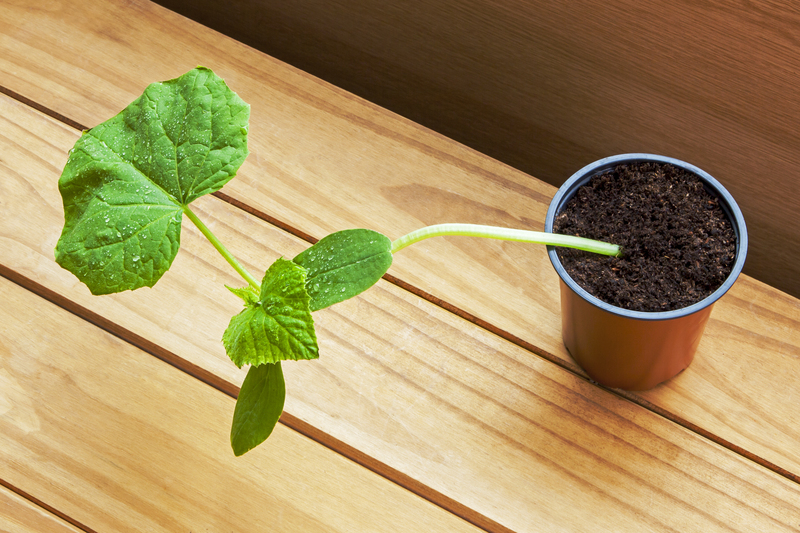How to Build Resilience in Your Garden Against Storms
Posted on 19/09/2025
How to Build Resilience in Your Garden Against Storms
As global weather patterns become increasingly unpredictable, garden resilience against storms is more important than ever. Violent wind, torrential rain, hail, and flooding can quickly turn a beautiful green oasis into a field of devastation. But with thoughtful preparation and smart gardening practices, you can build a robust, resilient garden that stands a far better chance against nature's fury.

Why Storms Pose a Threat to Gardens
Storms can dramatically alter the landscape of gardens in minutes. Wind can snap branches, hailstones can shred leaves, excessive rain leads to waterlogged soil, and flooding can suffocate plant roots. Some storms even leave soil barren and compacted, undermining plant health for seasons to come.
Therefore, storm-proofing your garden is an essential part of sustainable gardening. With the right strategies, you can improve your garden's capacity to recover quickly after a storm and minimize damage.
Essential Principles for Storm-Resistant Gardens
- Diversity: Cultivate a wide range of plants to mitigate the risk of losing everything to one event.
- Soil Health: Build rich, well-draining soil that holds together and allows roots to recover and respire.
- Structure: Incorporate physical barriers and proper plant supports to shield vulnerable areas.
- Water Management: Improve drainage and harness rain to your advantage.
- Location: Place plants thoughtfully to minimize exposure to extreme conditions.
Strategies to Build Garden Resilience Against Storms
1. Strengthen Soil Health
Healthy soil acts as a sponge during downpours and anchors plant roots against harsh winds. To enhance your soil's resilience:
- Add organic matter such as compost, leaf mold, or well-rotted manure. This improves soil structure, enhances drainage, and encourages strong root growth.
- Mulch deeply with straw, wood chips, or bark to protect the soil from splash erosion and reduce compaction during heavy rain.
- Practice no-dig gardening to preserve soil structure and encourage beneficial organisms that build resilience from the ground up.
2. Choose Storm-Resilient Plants
Plant selection is the cornerstone of a storm-resistant garden. Focus on native species and tough ornamentals proven to withstand your local weather extremes.
- Deep-rooted perennials such as daylilies or ornamental grasses anchor soil and survive floods better.
- Wind-tolerant shrubs (like viburnum or spirea) act as living windbreaks and bounce back from damage.
- Low-growing groundcovers (like creeping thyme) prevent soil erosion on slopes.
Tip: Avoid planting trees with brittle wood (such as silver maple or Bradford pear), as these are likely to break in strong winds.
3. Create Windbreaks and Shelter
Windbreaks protect delicate plants from the full force of gales. Here's how to introduce them:
- Plant dense hedges or rows of evergreens on the windward side of your property.
- Use fencing, lattice, or trellises with vines as permeable barriers (avoid solid walls, which can create turbulence).
- Position large shrubs to shield vegetable beds or flower areas.
These steps break wind speed and reduce the likelihood of snapped plants and eroded soil.
4. Improve Drainage and Water Management
Too much rain can drown even the healthiest garden. Here's how to keep your garden dry--not soggy--during a storm:
- Build raised beds so excess water drains away from roots quickly.
- Install French drains or swales to channel runoff down slopes and away from plantings.
- Use permeable paving materials on paths and patios to avoid ponding.
- Capture rainwater in barrels for later use, diverting it from sensitive beds during a deluge.
The goal is to direct and store water efficiently, minimizing flood risk and taking advantage of stormwater as a resource.
5. Support Tall and Vulnerable Plants
Staking and supporting is key for young trees, climbing plants, and anything top-heavy. Protect these by:
- Using strong stakes and soft ties to anchor trunks without damaging bark.
- Checking all supports each spring and after major storms for signs of wear or movement.
- Pruning long, unsupported branches that could act as sails in high winds.
6. Promote Plant Diversity
A diverse garden is naturally more resilient. Disease, pests, and climate extremes rarely affect all species equally.
- Mix native wildflowers, shrubs, and trees with non-natives suited to your microclimate.
- Vary planting heights and textures to disrupt wind and slow surface water.
- Use succession planting to avoid bare soil after harvests.
Planting for diversity means your garden bounces back faster after a storm and can quickly recover lost ground.
7. Prepare for Flooding and Waterlogging
If you are in a flood-prone area, plan your garden accordingly:
- Use flood-tolerant plants like iris, sedges, or dogwoods in low spots.
- Install rain gardens--shallow, planted basins designed to capture and slow excess water.
- Contour your land with berms and swales to channel water around vulnerable areas.
If roots do get flooded, gently aerate the soil with a garden fork after the water recedes to improve air flow and root recovery.
Storm-Ready Design: Garden Layout Tips
Garden design plays a critical role in minimizing storm impact. Consider these layout strategies:
- Plant in blocks or masses, not single rows, to reduce wind tunneling and better protect sensitive species.
- Position sturdy plants (shrubs or ornamental grasses) on windward sides to shield more fragile crops.
- Group pots and containers together in protected corners or against walls during storm season.
- Create buffer zones with tough, low-maintenance plants along outside edges, acting as a first line of defense.
What to Do Before, During, and After a Storm
Before the Storm
- Anchor loose items such as trellises, garden furniture, and tools that could become dangerous in high winds.
- Stake or tie up tall and top-heavy plants.
- Harvest ripening fruits and vegetables to prevent loss.
- Check gutters, drains, and grates to ensure rainwater can flow freely.
- Move vulnerable potted plants to sheltered locations or indoors.
During the Storm
- Your safety comes first. Stay indoors and never venture outside to tend plants during dangerous weather.
After the Storm
- Survey the damage carefully and document it for your records.
- Remove broken branches or uprooted plants promptly.
- Gently re-erect leaning plants or trees using new supports.
- Wash mud or debris from leaves with a soft spray.
- Monitor for disease and pests, which may strike stressed plants.
- Feed and mulch to encourage new growth where needed.
*Be patient*: Many plants can recover from foliage damage if roots remain intact.
How to Build Long-term Resilience in Your Storm-Proof Garden
- Log weather patterns and storm damage in a garden journal for planning improvements.
- Introduce climate-adapted plant varieties that can handle local extremes, such as drought-tolerant perennials or flood-loving natives.
- Practice regular pruning to keep trees and shrubs in optimal health and shape.
- Continuously amend soil and replace lost mulch to keep your foundation strong.
Over time, with every improvement, your storm-proof garden will develop deep-seated resilience and be better able to bounce back from whatever the weather brings.
Common Mistakes to Avoid in Storm-Proofing Your Garden
- Ignoring microclimates: Every garden has hot/cold or wet/dry spots. Place storm-sensitive plants in naturally sheltered locations.
- Relying solely on annuals: Deep-rooted perennials and shrubs are more likely to survive and recover.
- Neglecting drainage: Poor water management undoes even the toughest plant resilience.
- Overcrowding: Plants need space to recover and air to circulate after storms.

Conclusion: Creating a Resilient, Beautiful Garden in Every Season
Building garden resilience against storms is not just about "overcoming disaster"--it's about nurturing a thriving, sustainable ecosystem year after year. By combining smart planting, structural protection, diverse planning, and careful maintenance, you create a garden that not only survives storms but grows stronger from them.
Be proactive, observe your landscape, and adapt as you go. With each storm, your garden becomes more prepared and your gardening skills more seasoned. That's the true beauty of creating a resilient, storm-proof garden.
Frequently Asked Questions about Storm-Resilient Gardens
What are the best plants for a storm-prone garden?
Deep-rooted natives, tough ornamental grasses, flood-tolerant perennials, and flexible shrubs are often best. Plant for local conditions and favor diversity for superior garden resilience.
How do I quickly repair storm damage to my garden?
Act promptly by removing debris, pruning damaged branches, staking any leaning plants, and amending the soil. Water gently and monitor for signs of disease as plants recover.
How can I protect young trees from wind damage?
Stake young trees securely with flexible ties, but remove supports as soon as roots mature. Mulch around the base and prune for a strong structure.
How often should I check my garden's storm resilience?
Assess structures, supports, and vulnerable areas at the start of every storm season and after each major weather event. Regular maintenance is the key to a truly storm-ready garden.
With the right knowledge and commitment, your resilient garden can weather any storm--bringing peace of mind and year-round beauty to your home.



